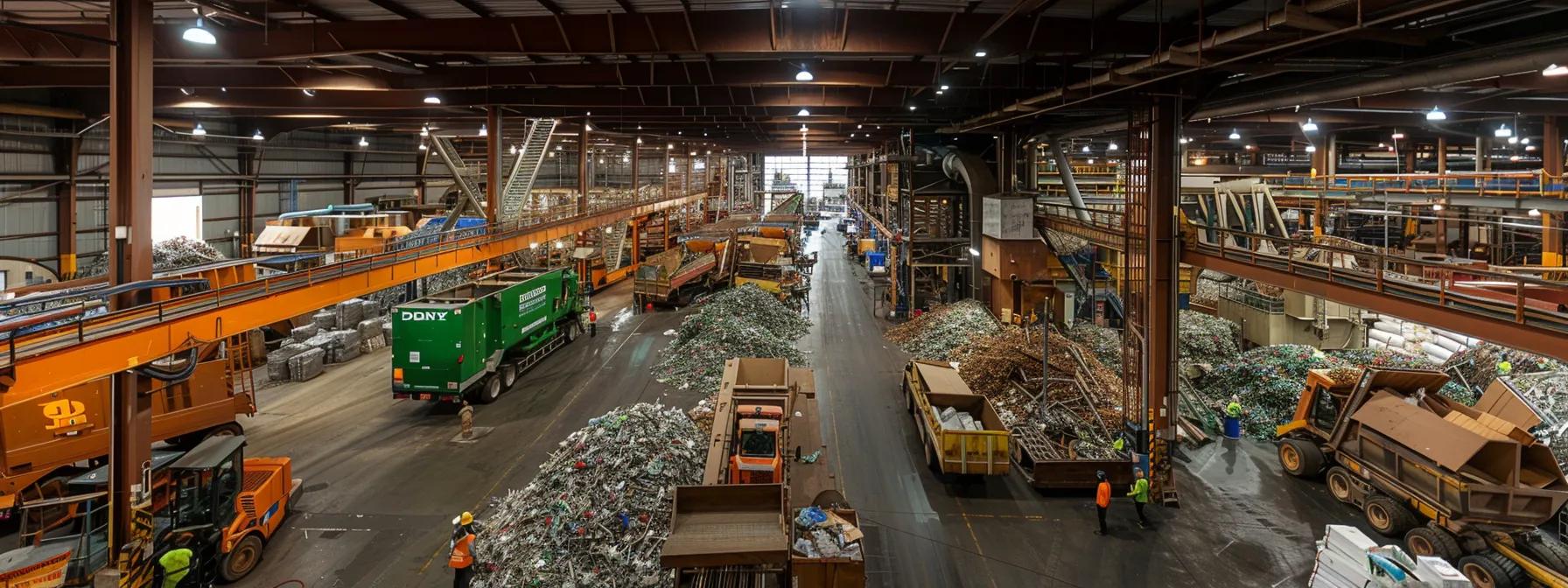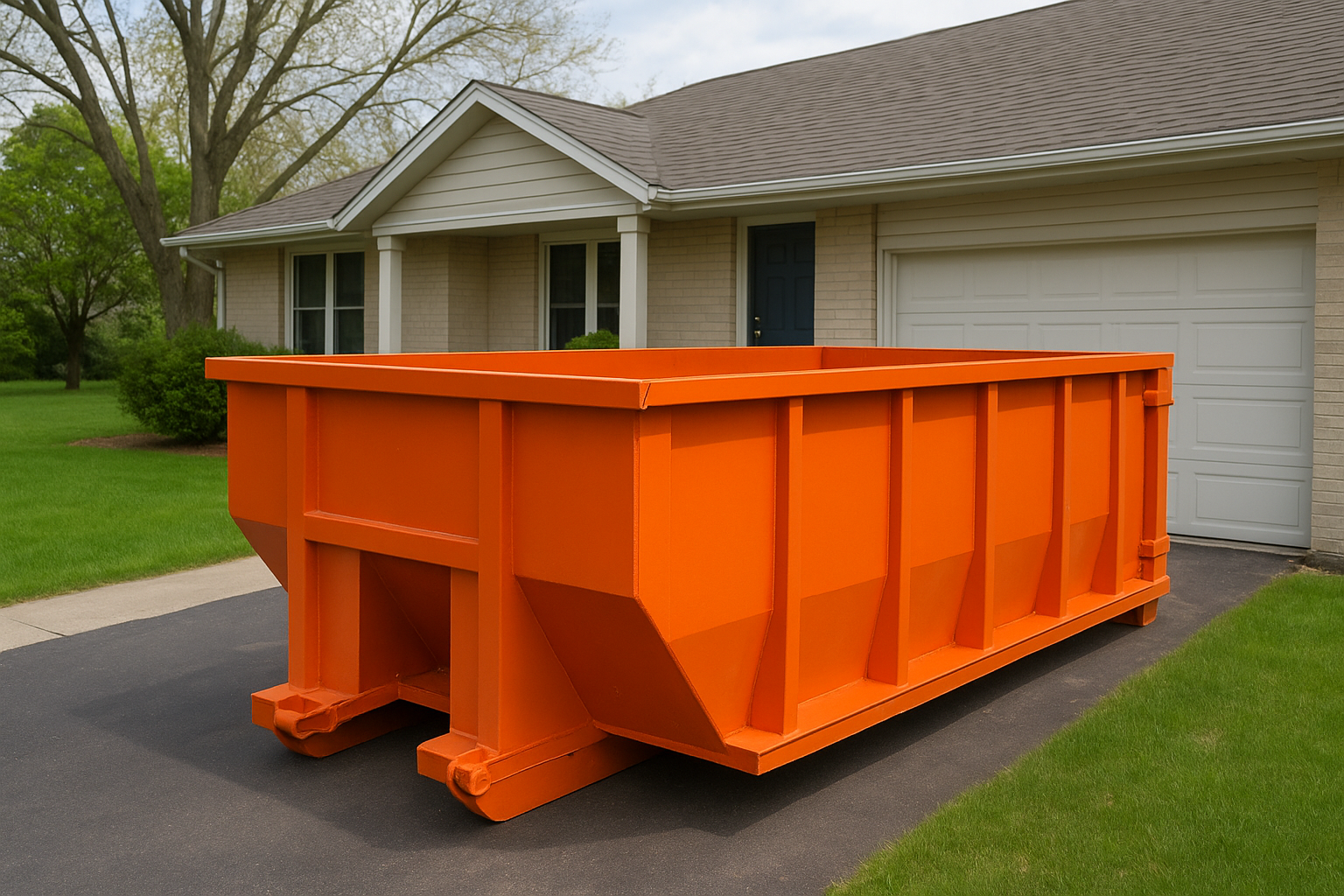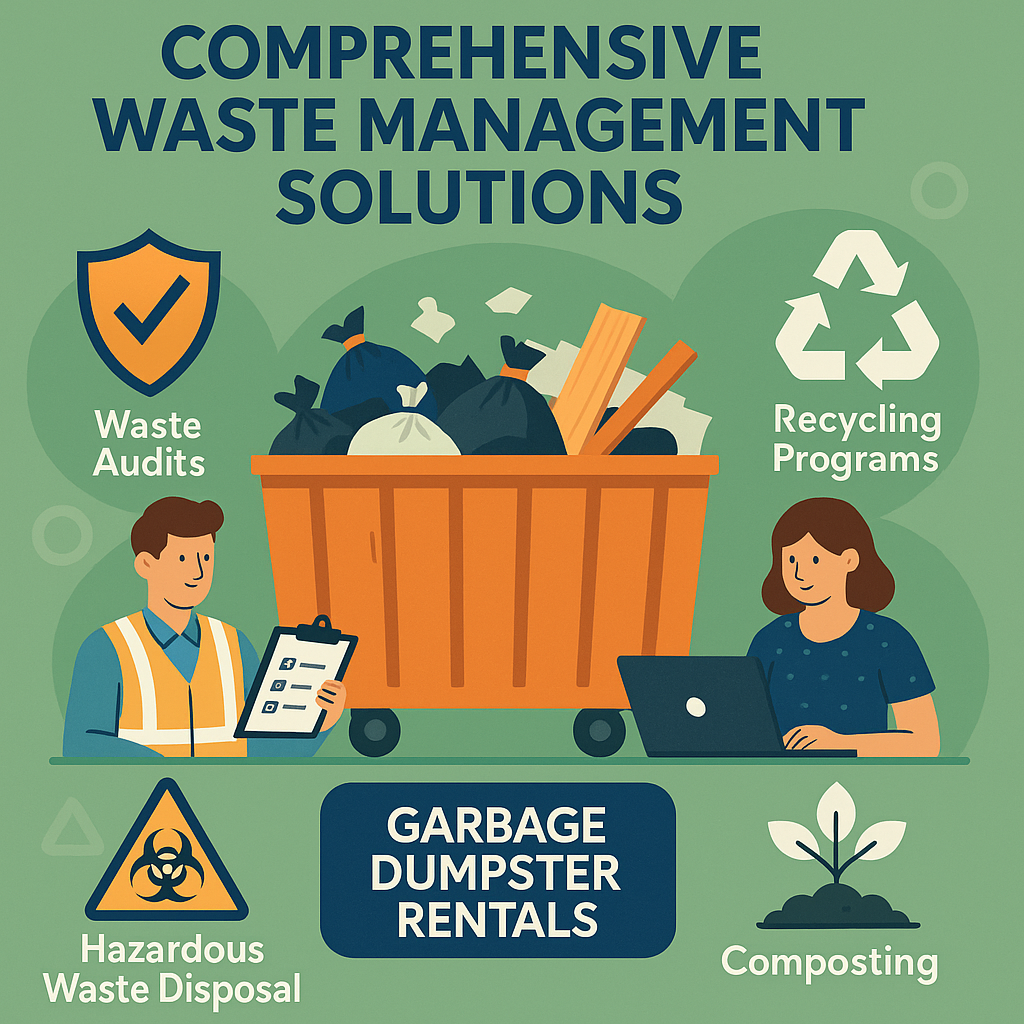
Wood recycling converts wood waste from demolition debris, discarded furniture, and industrial byproducts into reusable materials and energy. This sustainable practice minimizes landfill waste, reduces greenhouse gas and methane emissions, and supports the circular economy{:rel=“nofollow noopener”}. It preserves natural resources while enhancing cost savings and corporate social responsibility in green building and waste management initiatives. The following sections provide insights into the recycling process, environmental benefits, challenges, and practical tips for integrating wood recycling into broader sustainability plans.
What Is Wood Recycling and How Does It Work?
Wood recycling reclaims and repurposes discarded wood by collecting waste from households, construction sites, demolition projects, and industrial operations. Unlike simple reuse, the process involves sorting, cleaning, and processing wood into new products. Collected wood is carefully sorted by quality and contamination levels, with contaminants like nails and chemicals removed. The wood is then milled into chips, shavings, or fibers that serve as inputs for products such as mulch, fiberboard, and reclaimed lumber used in construction and green building{:rel=“nofollow noopener”} projects.
Additionally, wood recycling technologies like gasification and direct combustion convert waste into bioenergy, reducing reliance on fossil fuels and lowering greenhouse gas emissions. Advances in mechanical processing and automated sorting enhance efficiency, reduce environmental hazards, and contribute to an overall reduction in the ecological footprint of wood waste{:rel=“nofollow noopener”}.
What Types of Wood Waste Are Recycled?
Recycled wood waste includes clean scraps from construction, demolition debris, and discarded furniture. Untreated wood, free of fire retardants, stains, or chemicals, is preferred for high-quality reuse. Pallet wood from logistics operations is refurbished into new pallets or creative furniture. Industrial byproducts like sawdust and trim are transformed into wood pellets or compressed into fiberboard and particleboard. Even treated wood can be recycled after specialized processing to remove hazardous substances. Automated sorting systems help ensure each wood type is directed to the appropriate recycling streams, maximizing material recovery and minimizing ecological impact{:rel=“nofollow noopener”}.
How Is Wood Waste Collected and Processed?
Municipalities, recycling companies, and the construction industry use organized collection methods, including curbside programs, drop-off centers, and services for large demolitions. Once transported to recycling facilities, wood undergoes inspection and segregation using both manual and automated systems. Contaminants such as metal fasteners and plastics are removed before the wood is milled into chips, sawdust, or fibers. Advanced facilities employ wood recycling{:rel=“nofollow noopener”} and pelletizing for biofuel production and ensure consistent quality through regular inspections and automation, thus minimizing labor costs and environmental footprint.
What Products Are Made From Recycled Wood?
Recycled wood is transformed into a wide range of products. Reclaimed lumber, favored in construction, flooring, and furniture making, offers natural texture and an appealing historical character while reducing the need for new timber. Wood chips and mulch enhance landscaping, gardening, and agricultural practices by improving soil structure, conserving moisture, and suppressing weeds. Furthermore, engineered wood products like fiberboard and particleboard provide cost-effective, durable alternatives to virgin timber. The growing market for recycled wood products contributes to waste reduction and supports the circular economy{:rel=“nofollow noopener”} by reusing materials in innovative, eco-friendly ways.
What Are the Key Environmental Benefits of Wood Recycling?
![a modern recycling facility showcases a bustling assembly line of reclaimed wood, with workers efficiently sorting and processing timber, emphasizing the importance of wood recycling in reducing landfill waste and conserving forests.][image1]
Wood recycling offers numerous environmental benefits. It reduces landfill waste by diverting wood that would otherwise decompose, producing methane, a potent greenhouse gas. Recycling alleviates pressure on waste management infrastructure and diminishes the risks of soil and water pollution from landfill leachate. Read more about wood recycling{:rel=“nofollow noopener”}.
Recycling wood conserves forests by lessening the need for virgin timber, which in turn helps prevent deforestation and habitat destruction. Using reclaimed wood contributes to maintaining biodiversity and preserving carbon sinks essential for climate change mitigation. Additionally, because processing recycled wood requires less energy than processing raw timber, carbon dioxide emissions are significantly reduced. Together, these factors promote a circular economy{:rel=“nofollow noopener”}, ensure efficient resource use, and lower a company’s overall ecological footprint.
How Does Wood Recycling Reduce Landfill Waste?
By repurposing wood waste into products like reclaimed lumber and mulch, recycling prevents its accumulation in landfills. This diversion reduces methane emissions during decomposition and limits urban waste management challenges. Municipal recycling initiatives that intercept wood waste help decrease overall landfill volume, lower disposal costs, and enhance resource efficiency{:rel=“nofollow noopener”}.
In What Ways Does Wood Recycling Conserve Forests?
Recycled wood replaces the use of fresh timber, reducing the need to harvest new trees. This conservation protects forests, maintains biodiversity, and supports sustainable logging practices. The continued use of reclaimed wood contributes to carbon sequestration and helps preserve natural habitats for wildlife, benefiting both ecosystems{:rel=“nofollow noopener”} and local communities.
How Does Wood Recycling Lower Carbon Footprint and Emissions?
Since recycled wood requires less processing, energy consumption and carbon dioxide emissions are reduced compared to virgin timber production. Additionally, recycling prevents methane release from rotting wood in landfills. The use of recycled materials in construction lowers reliance on fossil fuels and supports green building{:rel=“nofollow noopener”} practices, ultimately leading to significant energy and cost savings for manufacturers and consumers alike.
What Role Does Wood Recycling Play in Supporting Biodiversity?
By reducing the demand for new timber, wood recycling helps mitigate deforestation and preserve natural habitats. Reclaimed wood incorporated into construction and landscaping projects enhances urban greenery and supports local flora and fauna. Moreover, diverting wood waste from landfills minimizes chemical runoff and pollution, thereby supporting a healthier, more diverse ecosystem. For more information, visit wood recycling for the construction industry{:rel=“nofollow noopener”} .
Overall, wood recycling delivers integrated benefits such as waste minimization, resource conservation, and energy savings. It reduces the demand for virgin timber and curtails the environmental impacts associated with harvesting new wood. The process contributes to lower greenhouse gas emissions and supports sustainable construction practices by supplying reclaimed and engineered wood products. Collectively, these outcomes lead to reduced operational costs, protection of ecosystems, and an enhanced environmental quality that benefits both urban and rural communities. wood recycling{:rel=“nofollow noopener”}
How Does Wood Recycling Support the Circular Economy?
![a vibrant urban workshop showcases skilled artisans meticulously transforming reclaimed wood materials into innovative products, illustrating the dynamic relationship between wood recycling and the circular economy.][image2]
Wood recycling is fundamental to the circular economy{:rel=“nofollow noopener”} by keeping materials in continuous use. Instead of being disposed of after one use, recycled wood is reintroduced into the production cycle as reclaimed lumber, mulch, or engineered wood products. This recycling loop reduces raw material extraction, lowers production costs, and decreases environmental stress on ecosystems.
Furthermore, using recycled wood contributes to job creation across waste collection, processing, and manufacturing, while stimulating innovation in sustainable product design. Through enhanced resource recovery and energy efficiency , wood recycling not only conserves natural resources but also supports economic growth and sustainability{:rel=“nofollow noopener”} across industries.
What Is the Circular Economy and Why Is It Important?
The circular economy aims to eliminate waste by keeping resources in continuous use through recycling, refurbishment, and remanufacturing. This model reduces the strain on natural resources, minimizes environmental impacts , and supports economic stability by reducing waste generation, material costs, and reliance on volatile markets. By designing processes for long-term reuse , companies can maintain a smaller ecological footprint and foster resilience against resource{:rel=“nofollow noopener”} scarcity.
How Does Wood Recycling Keep Materials in Use Longer?
By converting discarded wood into valuable products such as reclaimed lumber and mulch , wood recycling extends the lifespan of the material. The ongoing reuse of wood reduces dependency on new timber, lowers production energy demands, and integrates seamlessly into new construction, furniture manufacturing, and bioenergy production. This continuous circulation preserves resource value and supports efficient economic and environmental outcomes. wood recycling for the construction industry{:rel=“nofollow noopener”} .
What Sustainable Practices Are Involved in Wood Recycling?
Effective wood recycling relies on initiatives such as comprehensive waste collection programs and strict sorting processes to separate reusable wood from contaminated materials. Advanced cleaning, shredding, milling, and pelletizing enable the transformation of waste into high-value products. Energy -efficient processing technologies and automated sorting systems ensure that recycled wood meets quality standards while minimizing environmental impact. Compliance with environmental regulations further promotes sustainable practices that align with circular economy{:rel=“nofollow noopener”} principles.
What Are the Common Recycled Wood Products and Their Uses?
Recycled wood products serve diverse needs across residential, commercial, and industrial sectors. Reclaimed lumber is popular in construction and design for its durability, attractive aged texture, and lower environmental impact. Wood chips and mulch improve soils for landscaping, gardening, and agriculture by enhancing moisture retention and suppressing weeds. Engineered wood products such as fiberboard and particleboard offer cost-effective, sustainable alternatives in furniture manufacturing and interior construction. Together, these products illustrate how recycling wood{:rel=“nofollow noopener”} transforms waste into valuable, eco-friendly building materials.
What Is Reclaimed Lumber and How Is It Used?
Reclaimed lumber is wood salvaged from old structures and carefully processed for reuse. Its rich history, distinctive grain, and weathered texture make it highly prized in both modern and traditional design. In green building{:rel=“nofollow noopener”} and sustainable architecture, reclaimed lumber reduces the need for new timber while providing a unique aesthetic that conveys environmental responsibility and resource conservation.
How Are Wood Chips and Mulch Produced and Applied?
Wood chips and mulch are created by chipping wood waste into fine particles using specialized machinery. These materials are then screened for consistency and used in landscaping to improve soil structure, prevent erosion, and control weeds. In agriculture, mulch enhances soil fertility, conserves moisture, and supports beneficial microbial activity, while also serving as an inexpensive, renewable resource{:rel=“nofollow noopener”}.
What Are the Benefits of Using Recycled Wood Products Over Virgin Materials?
Using recycled wood lessens environmental degradation by reducing the demand for new timber, thereby helping to prevent deforestation and habitat loss. The recycling process consumes less energy, resulting in reduced greenhouse gas emissions and a lower carbon footprint{:rel=“nofollow noopener”}. Recycled products often offer unique historical aesthetics and cost benefits through lower material and transportation expenses. Such advantages make recycled wood an increasingly attractive option for environmentally conscious construction and manufacturing.
How Does Wood Recycling Impact Local Communities and Economies?
![a bustling urban recycling facility filled with diverse workers actively processing reclaimed wood, showcasing vibrant equipment and modern technology, emphasizing the impactful connection between wood recycling, job creation, and community growth.][image3]
Wood recycling positively affects local communities by creating jobs, promoting economic development, and lowering waste treatment costs. Recycling facilities stimulate local employment in operations such as processing, transportation, and equipment maintenance. This not only boosts economic activity but also supports local businesses and improves infrastructure. The resulting reduction in landfill sites and pollution leads to enhanced public health and higher property values. For more information on this topic, check out our blog on wood recycling for the construction industry{:rel=“nofollow noopener”}.
Additionally, communities benefit from the sale and use of recycled wood{:rel=“nofollow noopener”} products, which generate new revenue streams and foster innovation in sustainable product design. Together, these impacts make wood recycling a vital component of local economic growth and environmental well-being.
How Does Wood Recycling Create Local Jobs?
Processing plants and collection services required for wood recycling{:rel=“nofollow noopener”} generate a range of employment opportunities. These include machine operations, quality control, logistics, and administrative roles. As recycling programs expand, they help revitalize areas that have experienced industrial decline, contributing to broader economic and social benefits.
What Are the Community Benefits of Sustainable Wood Recycling?
Sustainable wood recycling reduces pollution and enhances local green spaces by diverting wood waste from landfills. The use of reclaimed products in community projects—such as park landscaping, playgrounds, and affordable housing—improves public spaces and promotes social cohesion. Savings derived from more efficient waste management can be reinvested in education, healthcare, and other public services, further benefiting residents. Wood recycling{:rel=“nofollow noopener”} is important for the construction industry.
How Can Consumers Participate in Local Wood Recycling Programs?
Consumers can support wood recycling by properly sorting wood waste and participating in municipal recycling programs. Local initiatives—such as designated drop-off centers, curbside collection, or community recycling events—provide opportunities to divert waste from landfills. Active consumer participation fosters a culture of resource conservation and strengthens community sustainability efforts. Wood recycling{:rel=“nofollow noopener”}
What Challenges and Solutions Exist in Wood Recycling?
Despite its benefits, wood recycling faces challenges related to waste collection, contamination, and market acceptance. Contaminants such as paints, preservatives, and mixed materials require additional processing, which increases costs and complicates quality control. Furthermore, many industries and consumers are accustomed to virgin materials, making the transition to recycled products challenging. Regulatory differences across regions add to the complexity. Wood recycling for the construction industry{:rel=“nofollow noopener”}
Innovative solutions such as advanced sorting technologies, improved decontamination methods, and standardized quality certifications are emerging to address these challenges. These innovations help streamline recycling processes and increase the acceptance of recycled wood products, ensuring that they consistently meet industry standards. Wood recycling{:rel=“nofollow noopener”} for the construction industry.
What Are the Common Obstacles in Wood Waste Collection?
Obstacles include inconsistent collection systems, contamination from non-wood materials, and limited public awareness. These factors drive up costs and reduce processing efficiency{:rel=“nofollow noopener”}. Coordinated efforts among local governments, recyclers, and community organizations are essential to overcome these issues through standardized practices.
How Is Quality Maintained in Recycled Wood Products?
Quality control is ensured through strict inspection and sorting processes. Advanced machinery combined with manual checks removes contaminants, while regular testing and adherence to industry standards guarantee that the final products are safe and reliable. Innovations in decontamination and processing protocols further enhance overall quality{:rel=“nofollow noopener”}.
What Innovations Are Improving Wood Recycling Efficiency?
Technologies such as machine learning for automated sorting, enhanced decontamination techniques, and energy-efficient processing equipment are driving improvements in wood recycling{:rel=“nofollow noopener”}. Digital tracking and real-time quality monitoring expand the range of recyclable materials and reduce processing costs, supporting broader industry growth.
How Can You Maximize the Environmental Benefits of Wood Recycling?
![a modern recycling facility showcases workers efficiently sorting and processing wood waste, surrounded by organized bins and vibrant informational signage emphasizing sustainable practices and the importance of environmental protection.][image4]
Maximizing the benefits of wood recycling involves adopting best practices at both the individual and organizational levels. Proper sorting and preparation of wood waste—by removing contaminants like metal, plastic, and chemicals—improve the efficiency of recycling processes and enhance product quality. For more information, you can refer to our article on wood recycling{:rel=“nofollow noopener”}.
Businesses can integrate wood recycling into their sustainability plans by partnering with certified recyclers, establishing dedicated collection points, and tracking waste reduction through sustainability reports. Local governments can further encourage recycling through grants, tax benefits, and educational outreach that emphasizes sound waste management and environmental protection{:rel=“nofollow noopener”} strategies.
What Are Best Practices for Sorting and Preparing Wood Waste?
Effective practices include thorough removal of contaminants and sorting wood by treatment status. Regular staff training and clear consumer guidelines are crucial for ensuring the waste is ready for recycling, thereby preserving quality and efficiency{:rel=“nofollow noopener”} throughout the process.
How Can Businesses Integrate Wood Recycling Into Their Sustainability Plans?
Show original
Businesses can boost their sustainability by creating dedicated waste collection systems, partnering with local recyclers, and adopting green procurement policies{:rel=“nofollow noopener”}. These steps reduce waste disposal costs while enhancing corporate image and reducing overall environmental impact.
What Are the Future Trends in Wood Recycling and Environmental Impact?
Future trends point toward increased automation, digital integration, and wider acceptance of recycled products. Continued advancements in sorting and decontamination technologies, coupled with stricter environmental regulations and growing consumer demand for sustainable products, are set to improve efficiency further and reduce processing costs. As the industry evolves, integrated waste management systems that connect various recycling sectors will likely emerge, further supporting the circular economy{:rel=“nofollow noopener”}.
Table: Environmental Benefits of Wood Recycling
Below is a table summarizing the key environmental benefits of wood recycling{:rel=“nofollow noopener”} :
| Benefit Area | Key Impact | Example/Metric | Related Concept |
|---|---|---|---|
| Landfill Waste Reduction | Diverts wood from landfills, lowering methane | Up to 50% reduction in organic waste | Waste management |
| Forest Conservation | Reduces the need for virgin timber; prevents deforestation | Preserves habitats and biodiversity | Sustainable resource use |
| Lower Carbon Emissions | Uses less energy than processing virgin wood | Up to 30% energy savings | Climate change mitigation |
| Energy Efficiency | Recycled wood as biofuel helps reduce fossil fuel use | Alternative energy source | Renewable energy |
| Circular Economy Support | Keeps wood in production cycles | Enhances resource recovery | Sustainable production |
Before this table, note that wood recycling{:rel=“nofollow noopener”} not only addresses waste issues but also supports practices that significantly lower energy consumption and reduce waste. This integrated approach benefits the entire ecosystem and leads to substantial environmental and economic improvements.
After reviewing the table, it is clear that the benefits of wood recycling{:rel=“nofollow noopener”} extend across multiple environmental domains, resulting in lower operational costs, reduced reliance on non-renewable resources, and improved overall environmental quality.



